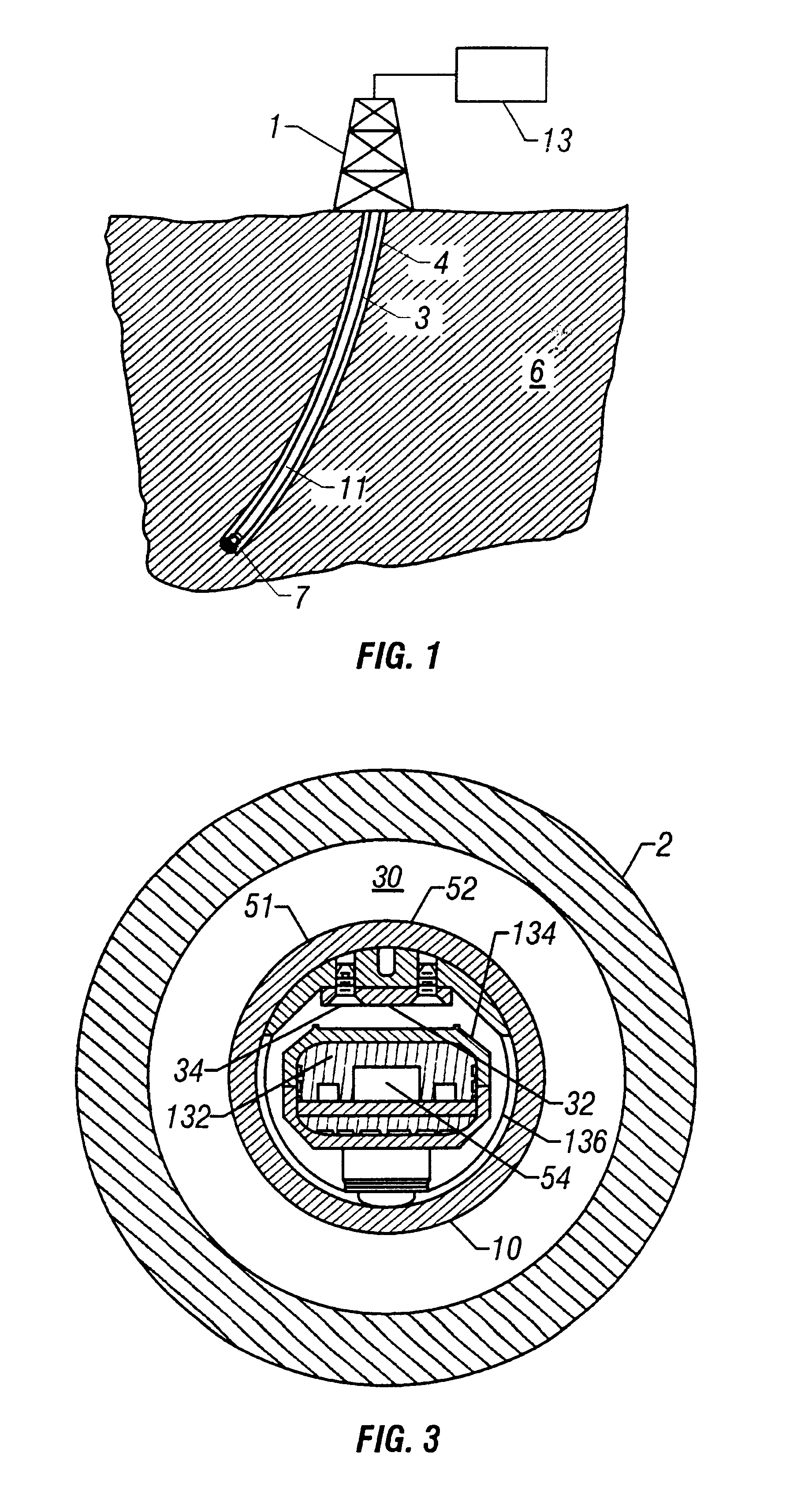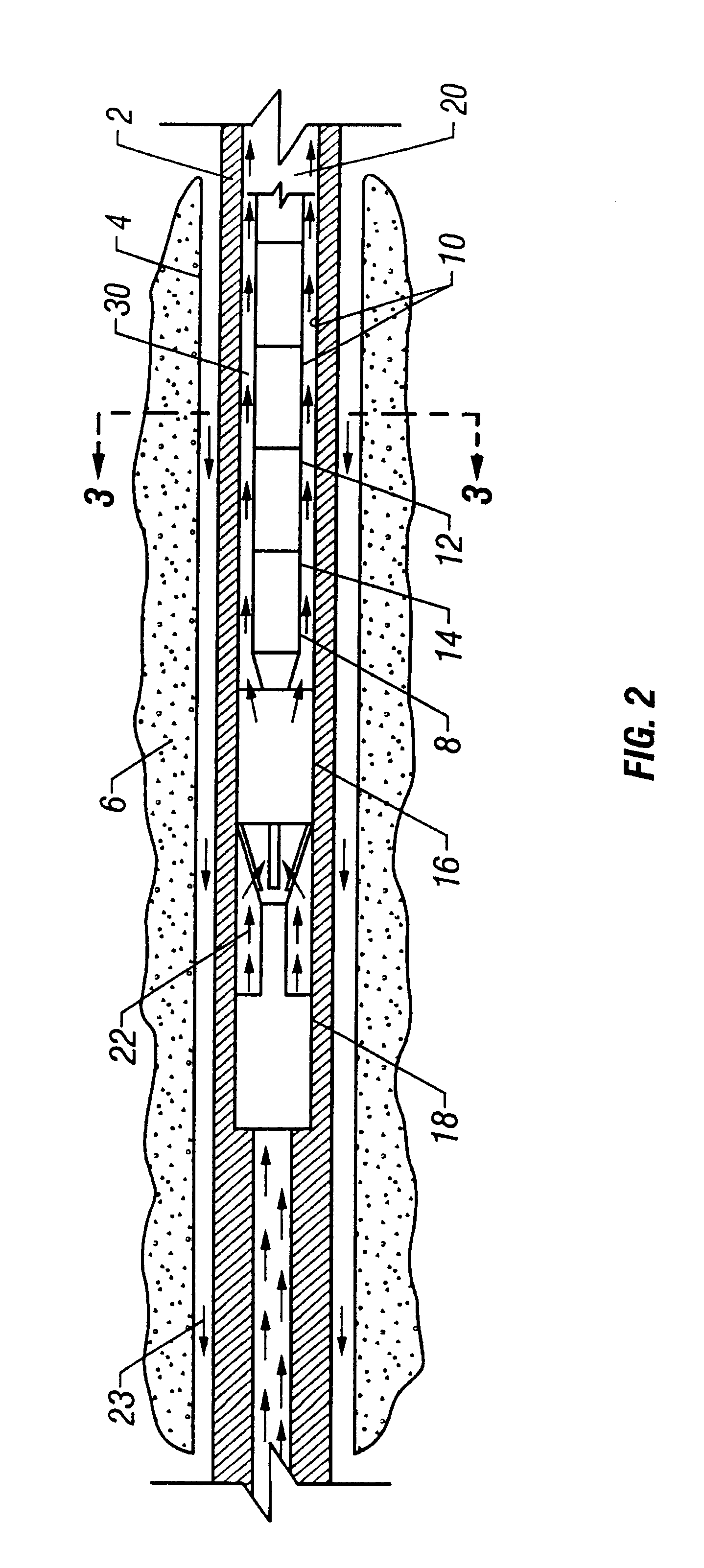Downhole sorption cooling and heating in wireline logging and monitoring while drilling
a technology of wireline logging and monitoring, applied in the field of downhole tools, can solve the problems of thermally exposed electronic components that are often heated by electronic components, the temperature of the formation itself exceeding the maximum temperature capability of components, and the life expectancy of thermally exposed electronic components is reduced, so as to facilitate the transfer of heat and effectively cool electronic components
- Summary
- Abstract
- Description
- Claims
- Application Information
AI Technical Summary
Benefits of technology
Problems solved by technology
Method used
Image
Examples
Embodiment Construction
The present invention provides a structure and method for a downhole tool component cooling system. The downhole tool component cooling system of the present invention does not require an external power source. The cooling system of the present invention utilizes the potential energy of sorption as the source of energy for pumping heat from a first region of the tool, housing the tool component which is to be cooled, to a hotter region in the downhole tool. The cooling region of the tool, adjacent to the component to be cooled, contains a solid source of liquid (such as water). This solid water source can be a low-temperature hydrate, desiccant, or sorbent from which water (or some other liquid) vapor is generated when heated. For example, when a portion of a hydrate releases water vapor, the remaining portion of the hydrate is cooled, and this in turn cools the adjacent component, thereby keeping the component within a safe operating temperature. Thus, the present invention provide...
PUM
 Login to View More
Login to View More Abstract
Description
Claims
Application Information
 Login to View More
Login to View More - R&D
- Intellectual Property
- Life Sciences
- Materials
- Tech Scout
- Unparalleled Data Quality
- Higher Quality Content
- 60% Fewer Hallucinations
Browse by: Latest US Patents, China's latest patents, Technical Efficacy Thesaurus, Application Domain, Technology Topic, Popular Technical Reports.
© 2025 PatSnap. All rights reserved.Legal|Privacy policy|Modern Slavery Act Transparency Statement|Sitemap|About US| Contact US: help@patsnap.com



